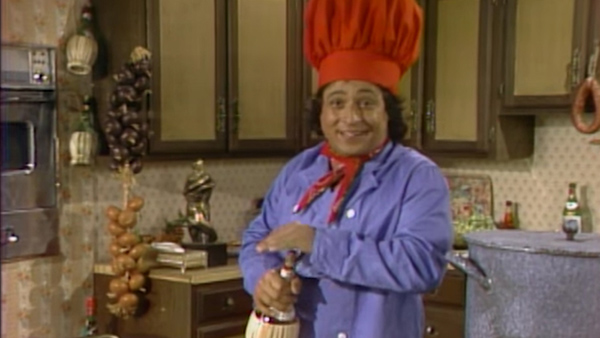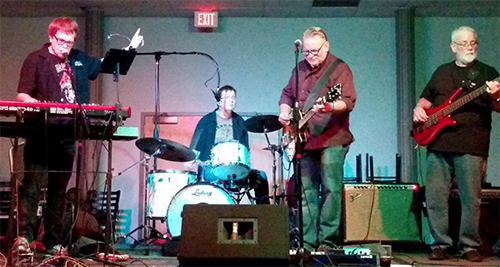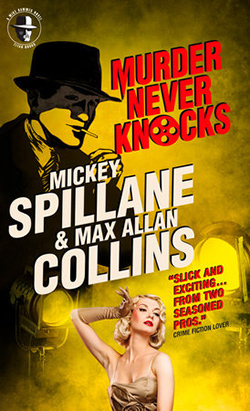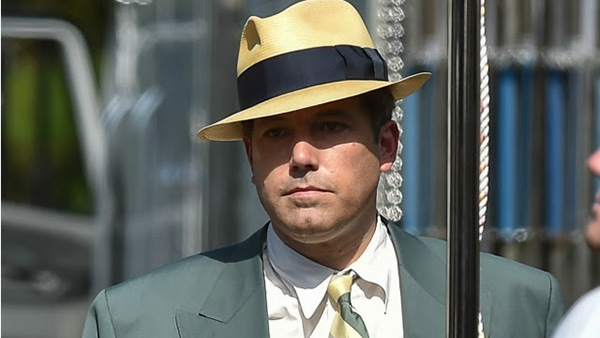Okay, as promised this will be my all-positive review posting, after blasting the critically acclaimed La La Land last week (and the not very acclaimed Why Him?).
Hidden Figures – This is a first-rate and very entertaining look at the hard-fought rise of three black women in the NASA program of the early ‘60s. Movies of this kind can be precious and they can work too hard; this one hits all the right notes courtesy of director and co-screenwriter, Theodore Melfi (with Allison Schroeder). The three women – Katherine Johnson (Taraji P. Henson), Dorothy Vaughan (Octavia Spencer) and Mary Jackson (Janelle Monáe) – are portrayed as three-dimensional people possessed of humor, drive and scant self-pity; they are “computers” (pre-IBM), which is to say math whizzes, who become essential to the program. They are discriminated against not only by their race but by their sex. Kevin Costner, as the head of the division, is the white guy who opens his eyes and sees the injustice around him, while the various other white folks who are prejudiced are seen as of their time and not evil. The space aspect is thrilling, and the period recreation is spot on (though the frequent use of the term “spot on” in the film might be anachronistic).
Sully – This one could have been a disaster, and in truth, while a success, it’s flawed. But the accomplishment of the real Captain Sully – and the measured portrayal of him by Tom Hanks – is worth the water landing. The brevity of the event itself is dealt with by flashbacks and dream sequences, quite deftly. The depiction of the speed and bravery of the first-responders is thrilling. What keeps SULLY good and not great is director Eastwood’s heavy-handed treatment of the passengers on their way to the fateful flight. For a thankfully short portion of Sully, we’re in disaster-movie land, with passengers being alternately too big as performed or too nice for a flight out of New York. LaGuardia is seen as a place where you can walk up to a counter in a newsstand/gift shop and no one is in line; where the attendant at the gate is friendly and helpful, even though you’re very late…and is charmed by your joking. The plane itself is a mythical place where a man flying alone is seated next to a woman with her baby and just delighted about it. This is a missed opportunity – had the passengers been as harried and irritable as real ones often are, it would mean much more when they come together in a time of crisis. Additionally, Sully’s wife (Laura Linney) is, oddly, portrayed as something of a harridan, and the investigative committee is played as villains – maybe they were, but it seems hoked-up. All this aside, the strong central performance from Hanks – with effective support from co-pilot Aaron Eckhardt – makes for a first-class ride.
Underworld: Blood Wars – The fifth Underworld film is a fun pulp adventure with charismatic Kate Beckinsale (as usual) in the lead. The elaborate back story of the prior films – requiring a prologue with a Beckinsale voiceover – threatens at first to sink the film, with its elaborate vampires versus werewolves premise spanning as it does many centuries. But the action is convincing and brutal and fast, and an epic sweep is accomplished, from the east-coast vampires’ gothic mansion to a visit to the mountain halls of the blonde vampires of the north. Especially good among many villains is Lara Pulver, the Irene Adler of the current BBC Sherlock. Is this ridiculous? Does Rotten Tomatoes give it 22% fresh, which is of course not fresh at all? Yes, but the film is well-made, and the line-up of fine UK actors could sell you just about anything. How can I like this when I so dislike La La Land? I guess I’m just an enigma wrapped up in a riddle.
Here are some older movies we’ve recently watched on Blu-Ray.
Gideon’s of Scotland Yard (also known as Gideon’s Day – 1958) – An oddball and underestimated entry in the John Ford canon, based on a J.J. Marric (John Creasey) novel in a long-running series, Gideon’s follows a Chief Inspector (Jack Hawkins) in a blazing color, late-fifties London on his long and eventful day with cases that range from sex crimes to murdered corrupt cops to posh boys pulling a big heist and much more. Whether you will like the occasional comic touches in this often very tough police procedural will depend on your tolerance of such Fordian shenanigans (even The Searchers has sometimes painful comic relief).
Another Ford, a masterpiece though also under-appreciated, is Drums Along the Mohawk, just one of many great films made in 1939 (the same year Ford also made Stagecoach and Young Mr. Lincoln!). It’s a fine Colonial “western,” the quotes necessary because Henry Fonda and Claudette Colbert set out for the frontier from Albany, New York – and the frontier turns out to be upstate New York. Their struggle to build a farm and a family against a backdrop of the War for Independence is episodic but compelling, and Ford’s patriotic, hard-fought conclusion pointedly includes an African-American and a Native American (even though the Iroquois are bad guys, like the “Tories”). Fonda – returning bloodied from battle – has his wounds tended by Colbert as he describes the brutal combat he endured so vividly no on-screen depiction could rival it. Colbert is wonderful evolving from pampered city girl to hard-scrabble farm wife.
Bill and Ted’s Bogus Journey (1991) – Not directed by John Ford. Finally out on Blu-Ray, the second (and to date final) Bill and Ted movie hasn’t a patch on the first one, but it’s still got some very funny moments. The Grim Reaper (William Sadler) playing Twister is a highlight. The originally announced title, Bill and Ted Go to Hell, would have been more apt (not a put-down – they do go to Hell, where they discover the Devil is a dick).
Petrocelli. This is a TV series that ran from 1974 to 1976, and a top-notch one, a shrewd updating of Perry Mason. It’s been released as a boxed DVD set by VEI but I watched two boxes (first and second season) from Germany, which had an English track and was available earlier. I went through all 44 episodes, and the pilot, as well as the theatrical film, The Lawyer (not included), from 1970 from Ipcress File director Sidney J. Furie. I was able to rent The Lawyer on Roku from Amazon.
Star Barry Newman was briefly a hot property in early ‘70s action movies (Vanishing Point, Fear Is the Key, Salzburg Connection) but he was at his mesmerizing, quirky best in the somewhat trashy (in a good way) The Lawyer, which was based unofficially on the Sam Sheppard case (also the inspiration for The Fugitive). The TV series carried over only Newman, with Diana Muldaur replaced by Susan Howard and Ken Swofford by Albert Salmi. Newman’s Mason-like attorney is married to Della-like Howard, and they are very affectionate and clearly have an active sex life. His Paul Drake is Salmi (a fine character actor who met a tragic end), a cowboy-type reflecting the “San Remo, Arizona” setting (it’s mostly shot in Tucson).
From the theatrical film comes the gimmick of Petrocelli using the same evidence the prosecution damned the defendant with to fit a wholly different version of the crime, creating reasonable doubt. The time constraints of a 45-minute episode water that gimmick down, but it’s still effective. Running gags get old – Newman parking in reserved spaces and putting various signs on his vehicle to avoid feeding the meter – and a guy who wins all these cases shouldn’t be having money trouble all the time (he seems to pay Salmi in beer). The Lalo Shiffrin music often goes over the top, especially early on, making a big deal out of Petrocelli driving his Winnebago down a desert road.
Newman is intense but winning, and while he’s had a nice career, he deserved to stay hot a lot longer. The guests stars never end – some not stars yet, like Mark Hamil and Harrison Ford. Lots of Star Trek guests appear here and directors, too, plus Shatner himself, admittedly in a not terribly good performance.
The show is at its best when it plays the courtroom card, particularly when the prosecutors are name actors (like Harold Gould, who was Petrocelli’s opponent in The Lawyer and appears thrice here), or cops (like semi-regular David Huddleston as Lt. Ponce). Its at its worst when it artificially pumps action into this intellectual-by-nature show, or does sexist comedy with strippers who come around for representation, raising Mrs. Petrocelli’s eyebrows – like lovely Susan Howard has anything to worry about. And toward the end a format change for a handful of episodes removes the courtroom aspect entirely.
Still, this is a very good show and worthy of a watch – a dozen great episodes and plenty of good ones.
* * *
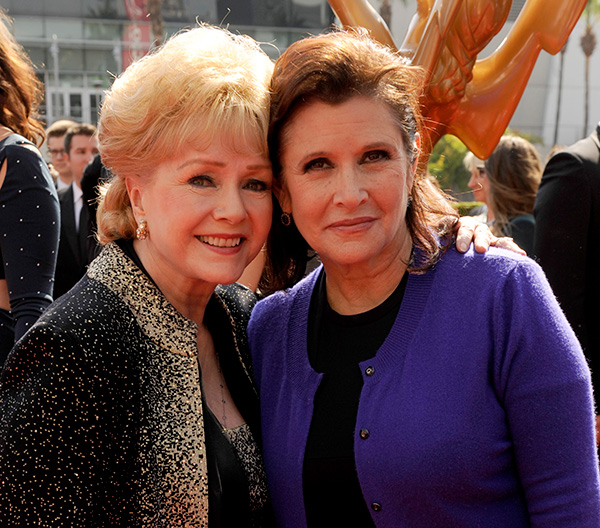
The loss of Debbie Reynolds and her daughter Carrie Fisher finds me recalling my brief meetings with each.
Some time in the late ‘80s, I was in Chicago for a meeting at the Tribune with my Dick Tracy editors. I killed time downtown in the middle of snow and cold, stepping into a video store (remember them?), finding it fairly packed. I wondered why. I hadn’t been there long when Debbie Reynolds – undeterred by the weather – breezed in for an appearance, swathed in mink. Mink coat, mink boots, mink gloves, mink cap. She was dazzling. She walked slowly through the crowd, handlers fore and aft, and when she got to me I said, “What’s wrong?”
Surprised, she said, “What is?”
Our eyes met.
I said, “No mink ear muffs?”
She beamed flirtatiously and slapped me gently with a mink-gloved hand and moved on.
Carrie Fisher I had an even briefer encounter with. A few years ago, I was out in LA for a pitch meeting (not successful), after which we repaired to a restaurant in Beverly Hills. There was a lot of outdoor seating, in part of which Mel Brooks was holding court. Be still my heart. When we got to our seats, I noticed Carrie Fisher at a table with friends and/or business associates. But I think friends. She was in glasses and looked good if not glamourous. Like Elaine Benes, she was having a big salad. Throughout the meal, I kept thinking about her presence. Mark Hamill was a friendly acquaintance of mine – damn near a friend! Was that enough to start up a conversation? Probably not.
All that happened was, when I went back to use the men’s room, I moved past her table, caught her gaze and smiled and said hello. Like her mother, she gave me her eyes and a smile and said hello back to me, as if she knew me well.
A couple of very small things. But at the moment they seem rather large.
M.A.C.
